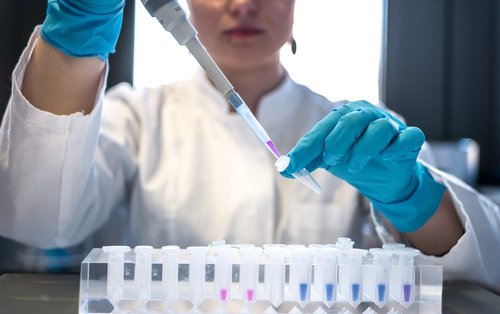Pre-Breeding Platform for Canadian Wheat Improvement

Written by: Ellen Cottee
Lead Researchers: Dr. Sylvie Cloutier (AAFC – Ottawa) and Dr. Curt McCartney (AAFC – Morden)
With a global population of nine billion expected by 2050, many in the agriculture industry are interested in finding tactics to keep up with the growing demand for food. For Canada, feeding the world means growing and exporting even more wheat, a crucial crop due to its nutrient and calorie density.
One response to the call for improved and increased wheat production includes pre-breeding – a process that identifies key characteristics and genes in plant materials other than domestic wheat, and transfers them to materials breeders can work with to develop new varieties.
Wheat geneticists are the first step in this process, narrowing down genetic data to find DNA markers and germplasms that show promising disease resistance and crop resiliency. Despite doing critical research, however, their findings don’t always see the light of day.
“I found the work [geneticists] were doing fascinating,” said Dr. Sylvie Cloutier, principal research scientist with Agriculture and Agri-Food Canada – Ottawa, “but often, they were working in isolation or with one breeder, and their discoveries were not being taken up.”
Building upon past research and discussions, Cloutier and her team received funding under the 2018-2023 Canadian National Wheat Cluster to bridge this information gap, setting out to create a database where wheat geneticists can share all their findings.
“We needed to have a platform that was national in scope, that was fully open, where material and data is publicly available to everybody,” Cloutier explained, “and the chance to have it taken up would be greater.”
The platform is home to DNA markers and germplasms containing desirable traits, with the majority of current data focused on resistance to fusarium head blight and common fungal diseases. Instead of raw data, the database will also have search functions for breeders to narrow down traits of interest as well as a curator to assist with the addition of more information in the future.
Creating new wheat varieties through pre-breeding happens in three steps: discovery, transfer and deployment. This project focused on the first phase, compiling the important information geneticists find in the germplasm and DNA of wheat relatives. Cloutier said she hopes to move their work forward to the transfer phase in the upcoming 2023 – 2028 research cluster.
Adjacent to the creation of this platform, Cloutier received funding from Genome Canada to research wild wheat genetics – another key component of the pre-breeding process. These ‘cousins’ of cultivated wheat have genetic properties desirable to wheat breeders, growers and exporters, presenting an opportunity to further the genetic diversity and resilience of cultivated wheat varieties.
Looking to the future, Cloutier plans to progress the platform to the transfer phase of varietal development through the upcoming 2023 research cluster. Above all, she hopes her work contributes to – and helps to grow – Canada’s stellar wheat reputation.
“My goal is to make sure Canada continues to produce the best wheat, and we never lose that edge,” she said. “Canadian agriculture feeds the world, and I want us to stay there.”